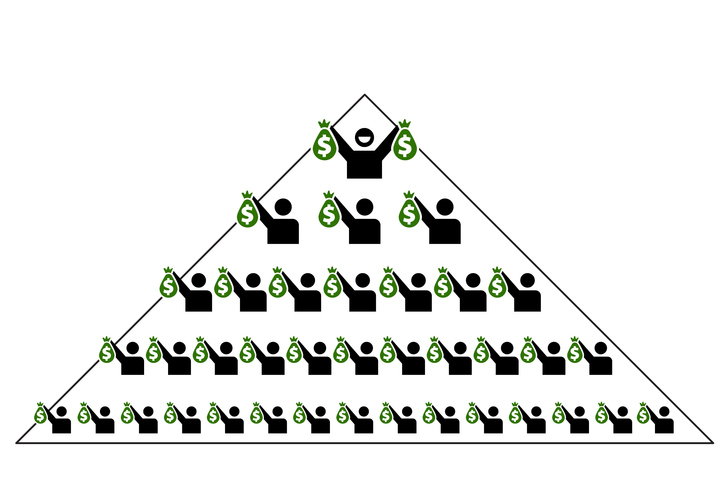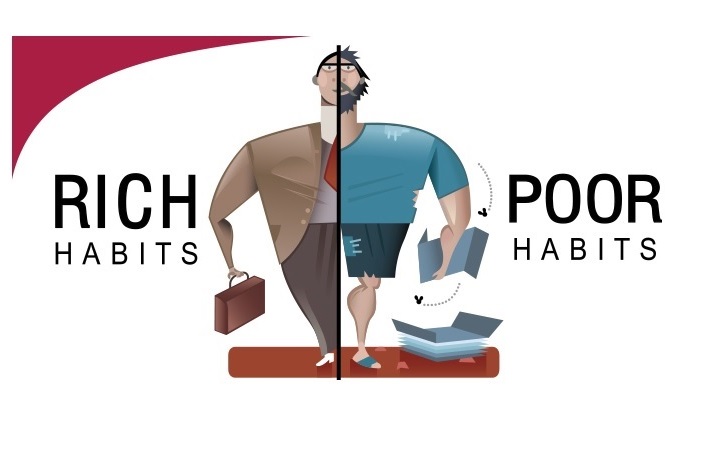There is an uncomfortable truth every investor must confront: your capital is never truly safe. The twin threats to long-term wealth are inflation and stock market crashes. Preserving and growing capital requires balancing these two major risks.
The Million Dollar Question
Imagine receiving $1 million today, along with the responsibility to safeguard and grow it over the next decade. Your primary goal: preserve its real value — and ideally increase it. As a careful steward, how would you allocate this capital?
At first glance, the answer seems straightforward: keep it safe, perhaps in a savings account. But on closer inspection, the choice is far from simple. History shows that even the most secure-seeming options can carry hidden risks.
Capital at Risk, Always
To understand this, let’s turn to history. Using US financial data from January 1900 to December 2024, we find that inflation averaged 3.0% per year.[1] This means hiding cash under the mattress would have been disastrous: over a century, one dollar eroded to less than four cents — a >96% loss in purchasing power. Inflation will eat it slowly and silently.
Put it in a savings account? That gives you interest and also feels safer. Over the past century, savings accounts in countries like the United States and other western countries have on average kept pace with inflation. The average short-term saving rate, proxied by short-term US T-bills, averaged 3.0% per year.
Averages mask significant losses, however. In the 1940s and early 1950s, during a period of financial repression, interest rates were held artificially low while prices crept higher. This was done to bring down the debt of the governments that were heavily indebted after World War II. Savers witnessed a real loss in purchasing power of more than 40%.
Exhibit 1 serves as a wake-up call to savers. It shows the peak-to-bottom real return of US T-bills. It has a maximum lookback window of 10 years (otherwise recovery would be even slower). This is a picture which is counterintuitive. Your savings are not safe when you have a 10-year horizon and correct for inflation.
Exhibit 1. Real Drawdowns US T-Bills
Sources: McQuarrie (2024) and Robeco
As of 2025, a new era of financial repression appears to be underway. The inflation spike of 2022, combined with interest rates lagging behind, caused a real loss in value of nearly 20%. Over time, this negative real rate has compounded. Savers are still down about 10% relative to 2010 levels, and with real interest rates near zero in 2025, catching up will be difficult.
The Illusion of Safety
These episodes underscore a fundamental truth: even assets that feel safe — like savings accounts — can expose investors to real, lasting losses. That brings us to a broader point: capital is always at risk. Whether you choose to save or invest, you’re making a bet. Inflation and market volatility are ever-present forces.
Over longer horizons, the line between saving and investing begins to blur. What feels stable in the short term may fail to preserve value in the long term.
Government Bonds: Safer—But Safe Enough?
For many investors, the next step beyond saving is government bonds. They typically offer about 1% more yield than a savings account and are often viewed as a safer alternative to equities. But safe from what?
Bond investors have faced challenging periods since 1900. After World War I, a postwar economic boom led to rising inflation, which eroded the purchasing power of government bonds issued during the war. These so-called Liberty Bonds came with low fixed interest rates, which quickly became unattractive in the new inflationary environment. The Federal Reserve responded by raising rates, and bond prices fell sharply, amplifying losses during the recession and deflation that followed in the early 1920s.
A similar pattern followed World War II: artificially low interest rates and a prolonged bond bear market. The experience of the 1970s is even more familiar. During that “bond winter,” bondholders lost nearly 50% in real terms. That’s not just volatility, that’s wealth destruction. Remember: it takes a 100% gain to recover from a 50% loss.
As of 2025, investors are once again in a “bond winter,” facing a cumulative real loss of around 30%, driven by the high inflation of the early 2020s and the subsequent rise in bond yields.
Exhibit 2. Real Drawdowns US Bonds

Sources: McQuarrie (2024) and Robeco
Stocks: Long-Term Gain, Long-Term Pain
An investor is always either at an all-time high or in a drawdown. Most stock market investors are aware of this. Stocks can really disappoint in both the short-term and the long-run. The Great Depression wiped out nearly -80% of real wealth invested in the US stock market. Even after a strong recovery, it took many years, even decades, for most investors to fully heal. Not every dip is followed by a swift recovery. Inflation, often overlooked, can further erode real returns, even when stock markets go up in nominal terms.
Exhibit 3 shows that history is full of market corrections of -20% or more. The 21st century alone had three drawdowns of more than -30% in real terms. These huge and frequent losses are a feature of stock markets. Because losses tend to occur suddenly, most investors are well aware of the short-term risks.
Exhibit 3. Real Drawdowns US Stock Market

Sources: McQuarrie (2024) and Robeco
Over the long-term equities deliver returns higher than bonds. Yet over multi-decade horizons, equities can still disappoint. Recent research by Edward McQuarrie suggests that even in the 19th century, stocks did not consistently outperform bonds, challenging the idea that equities are always the safest long-term investment.[2]
Comparing Asset Classes
We examine real losses — the decline in purchasing power — across four key asset classes: savings accounts, government bonds, gold, and equities. We look at both short-term (one-year) and long-term (10-year) risk using the conditional value at risk (CVar) — a measure of average losses in the worst periods — also known as the first lower partial moment (LPM1). This measures the expected loss in the worst periods, specifically those below the inflation rate.
Savings accounts, while often seen as safe, can quietly erode wealth over time. The average real loss looking back 10 years (CVar) was -17%. Over shorter periods, the pain is less: a typical loss of -2%, with a maximum one-year drawdown of -9%. This highlights a key paradox: savings are comparatively safe in the short run, but are far from secure over longer horizons.
Bonds offered somewhat better long-term performance, but with deeper short-term drawdowns. Their worst 10-year loss was -49%, slightly worse than savings, though the average long-term loss was smaller at -10%. Over one-year periods, losses ranged from -4% expected to -25% max.
Gold, often viewed as a safe haven, is volatile in both the short and long run. It performed especially well in the 1970s and more recently outpaced bonds in the inflationary 2020s. Yet, gold remains risky. Its worst one-year and 10-year real losses were -44% and -68%, respectively, with high average drawdowns as well, even higher than stocks. Despite this, it can still serve as a useful diversifier — particularly when combined with steady stocks.[3]
Equities deliver the highest long-term returns, but also the greatest drawdowns. The average loss was -15%, and even in a single bad year, the expected real drawdown was -7%, with a maximum of -62%. Long-term investors are rewarded, but only if they can endure severe interim declines.
Exhibit 4 —Risk and Return of Asset Classes
Sources: McQuarrie (2024) and Robeco
These long-term numbers are rarely shown — and for good reason. Most empirical research focuses on short-term, nominal returns, which offer more statistical power but assume investors only care about monthly volatility. When viewed through a real, long-term lens, a very different picture emerges. Cash and bonds may appear stable in the short run, but they carry substantial long-term risk once the focus shifts to inflation and long term potential losses.
The takeaway is simple: in the long run, all investments are risky. Even savings. What matters most is not whether you face risk, but how you manage this risk.
Exhibit 5 — Summary Risk Levels by Asset Class
Steady Stocks Offer a Middle Way
You can’t hide from risk. Once you have capital, you’re exposed — whether you save or invest. The good news is that risk can be reduced through diversification across asset classes: bonds, equities, savings, and even gold. This is one of the few “free lunches” in finance, reducing risk without sacrificing return. Yet even in a classic 60/40 portfolio, most of the risk still comes from equities.
There is a better way: reduce stock market risk by focusing on stable companies, sometimes called “widow and orphan stocks.” These firms tend to deliver consistent returns, much like bonds, but with an important advantage: their earnings can grow with inflation.
I’ve studied and written extensively on this investment style in academic papers and in the book High Returns from Low Risk. These low-volatility stocks may lag during strong bull markets, but they tend to hold up better during downturns. In the short run, they certainly are not as “safe” as bonds or savings, but they are less risky than the broad equity market. In the long run, they offer robust capital protection, particularly in environments characterized by stagflation like the 1970s, when risky stocks struggled. The drawdowns of steady stocks are less severe and tend to be shorter when investing in the complete stock market which also includes the riskiest stocks. Historical deep data for this strategy exists, and in this blog, we present results starting from 1900. [4]
Historically, steady stocks have delivered impressive results: a real return above 10% CAGR from 1900 to 2025.¹ Of course, this figure benefits from the exceptional historical performance of US equities and does not account for taxes or transaction costs. Looking ahead, returns are likely to be lower. Multiples have expanded, driving down expected returns. With US debt/GDP levels near post-war highs (comparable to 1918 and 1945) and equity valuations near all-time highs, forward-looking real returns will likely be more modest. (See blog: “When the Equity Premium Fades, Alpha Shines.”)
Still, the relative performance of steady stocks remains compelling.
Exhibit 6: Risk and Return of Portfolios
Sources: McQuarrie (2024) and Robeco
Interestingly, Exhibit 6 makes a strong case for both diversification and steady stocks. A portfolio fully allocated to steady stocks exhibits similar expected losses as a traditional 60/40 portfolio. Yet, being fully invested in stocks means tail risk which is apparent since the maximum real losses are higher for steady stocks than for the 60/40 mix.
Therefore, a steady 60/40 portfolio deserves attention. This portfolio replaces equities with defensive equities and has lower downside risk, comparable to the ultra-conservative permanent portfolio which invests 25% in stocks, bonds, savings and gold, but with meaningfully higher returns.[5]
The numbers speak for themselves: replacing (part of) the equity portfolio with a defensive equity strategy helps to reduce downside risk. It is so effective that it offers pretty much similar downside protection as the ‘ultra conservative’ permanent portfolio.
Still, no strategy fully eliminates drawdowns. At any given time, investors face an average drawdown of at least –3% on a one-year basis (–2% for savings), and –6% over a 10-year horizon (–9% for savings). There is no risk-free option once your horizon is long and open-ended.
The Steady 60/40 Portfolio offers a compelling blend of inflation protection and stock market resilience. While already robust, it serves as a strong starting point open to thoughtful refinements. For instance, adding 5% to 10% in gold or commodities, as in the Permanent Portfolio, may further reduce drawdowns during inflationary periods such as the 1920s, 1970s, and 2020s. Additional enhancements — like momentum, or value signals — can boost long-term returns through alpha.
The optimal mix ultimately depends on an investor’s risk appetite and time horizon, making it adaptable to a range of preferences. But the first-order effect is clear: stock market risk is the largest source of long-term portfolio losses — and it can be reduced with an allocation to bonds. However, another effective way to lower risk is by replacing a portion of equities with steady stocks. This approach preserves long-term returns while also allowing for a lower bond allocation, which helps reduce risk in an inflationary environment.
The Safest Move: Lose Less
Even the safest investment will lose value at some point. No portfolio is immune to real losses. But some portfolios lose less, and losing less gives investors the time and confidence to stay invested.
One key defense is diversification. Putting all your capital in a savings account increases long-term inflation risk. Putting everything in equities increases both short- and long-term drawdowns.
A steady portfolio — one that includes a substantial allocation to low-volatility, conservative equities — offers a compelling combination of inflation protection, market stability, and long-term return. The data show that such portfolios reduce real drawdowns significantly compared to both an all-equity allocation and a traditional 60/40 mix, without sacrificing long-term performance.
Now imagine again being entrusted with $1 million to preserve and grow over the next decade. You now recognize that it’s not an easy task but a balancing act. Instead of 100% saving, history suggests the best protection comes from diversified investing, including a meaningful allocation to steady stocks.
Key Takeaways
Over long horizons, no asset is truly safe — not even cash.
Historical data show steady stocks combine resilience with attractive returns.
Diversifying across better — not just more — assets reduces drawdowns.
Pim van Vliet, PhD, is the author of High Returns from Low Risk: A Remarkable Stock Market Paradox, with Jan de Koning.
Link to research papers by Pim van Vliet.
References
Baltussen, G., Swinkels, L., & van Vliet, P. (2023a). “Investing in deflation, inflation, and stagflation regimes,” Financial Analysts Journal, 79(3), 5–32.
Baltussen, G., van Vliet, B., & Van Vliet, P. (2023b). The cross-section of stock returns before CRSP. Available at SSRN 3969743.
McQuarrie, E. F. (2024a). Stocks for the long run? Sometimes yes, sometimes no. Financial Analysts Journal, 80(1), 12-28.
McQuarrie, E.F. (2024b) Introducing a New Monthly Series of US Government Bond Returns 1793–2023. Working Paper 4899187, SSRN
van Vliet, Pim, and Harald Lohre. “The Golden Rule of Investing.” The Journal of Alternative Investments (2023).
CFA Institute Enterprising Investor. May 2025. When the Equity Premium Fades, Alpha Shines. Link
[1] We use 30-day T-bills (90-day prior to 1926) as proxy for saving accounts, Government Bonds, Stock Market and Conservative Stocks. Sources are from MacQuarrie and Robeco.
[2] See 2024 study by Edward McQuarrie, E. F. (2024). Stocks for the long run? Sometimes yes, sometimes no. Financial Analysts Journal
[3] See: The Golden Rule of Investing by Pim van Vliet, Harald Lohre :: SSRN. While investors can hold physical bullion, gold ETFs offer a more practical solution.
[4] The Conservative Formula data are used and from 1929 can be downloaded at paradoxinvesting.com/data. Data going back to 1900 is described in the 2023 study ‘The cross-section of stock returns before CRSP.”
[5] Popularized by Harry Browne in Fail-Safe Investing: Lifelong Financial Security, 1981. The Permanent Portfolio allocates equally to stocks, bonds, cash, and gold to hedge against inflation, deflation, recession, and market risk.




























